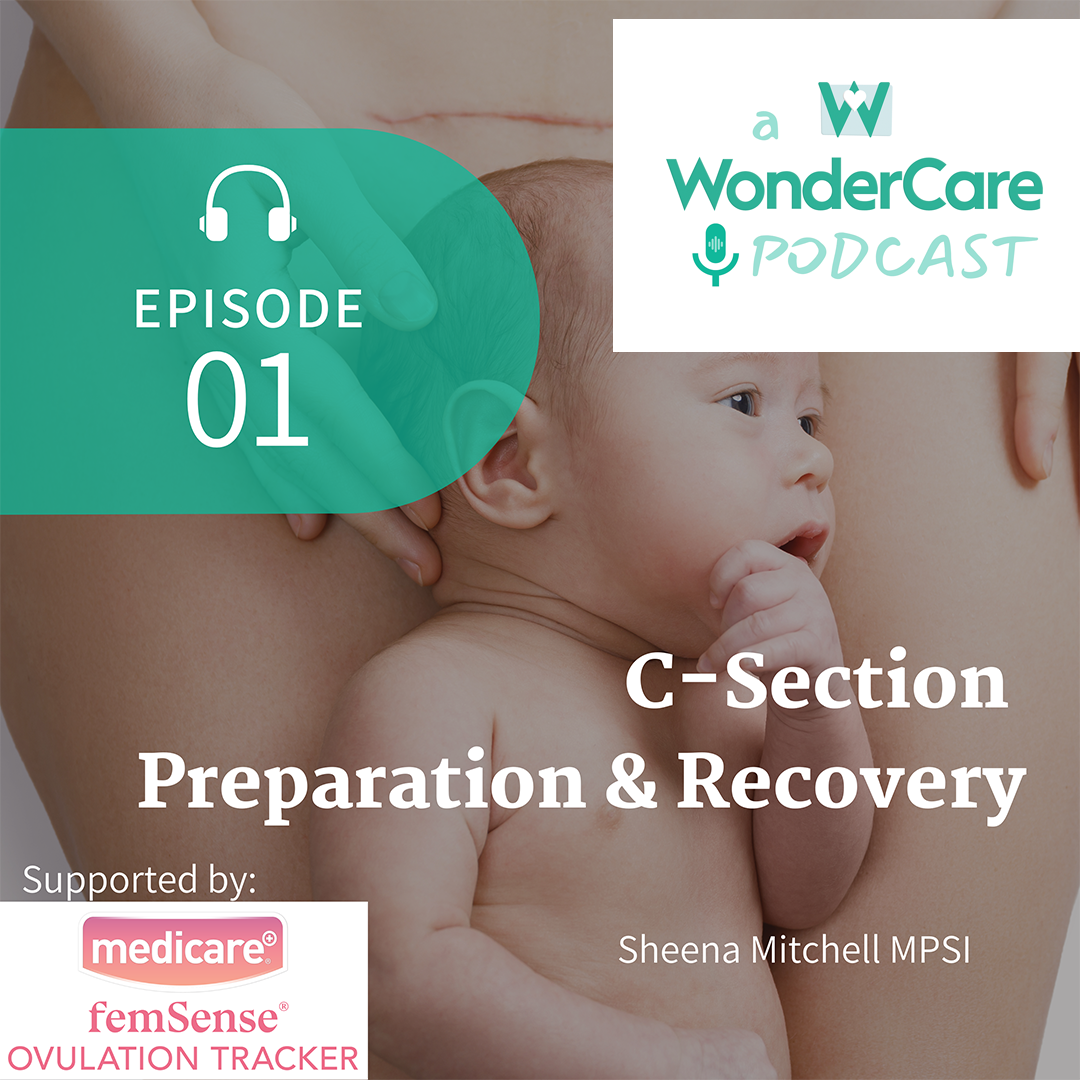Episode Transcript
Speaker 1 00:00:03 Hello and welcome to the WBA podcast. My name is Sheena Mitchell. I'm a pharmacist in mom of three. I combine healthcare and practical advice to help you on your parenting journey. If you enjoy listening to a WBA podcast, I'd be really grateful if you could follow or subscribe and leave a review. It really helps to support the show. Thank you. I am delighted to partner with one of my all time favorite products Sale Plus. This is the world's first 100% natural dry salt therapy device. It's clinically proven to relieve a wide variety of allergens and respiratory conditions. This salt therapy method has been trusted for generations and has become hugely popular worldwide. As more and more people recognize the superb results achieved from a natural and noninvasive method, this device will help you breathe easier and sleep better. Today I'm really happy to say that I have Ruth Marrow and Sarah Connor from the Asthma Society of Ireland back to join me to talk about the impact of asthma on exercise and also to talk about asthma attacks and how best to manage them. So thank you very much for joining me today to talk about exercise asthma and asthma attacks. What impact do you think that asthma has on children wanting to participate in sport?
Speaker 2 00:01:27 Okay, well basically it shouldn't have an impact really because if your child's asthma is well controlled, they should be able to participate in sport like any person with that doesn't have asthma. And I suppose the things are at this time of year in particular because we're in this cold spell and that, and it'll probably get cold as the winter goes on, that the cold air is one of the big triggers that actually can make asthma worse. And particularly with exercise and asthma, most people that have asthma will have exercise as a trigger factor in conjunction with their other triggers. On the other hand, there is a condition, no one's exercise induced asthma who is just pure exercise on its own. The, and the person doesn't actually have any the trigger at all and that that's actually quite rare. To be fair, it's only about 5% of the asthma population actually that have really exercise induced asthma.
Speaker 2 00:02:09 But for the majority of children, triggers like the cold air possibly will make their asthma worse during exercise. So it's really important that you're warm up properly, cool down properly. And then where is sned maybe you know, going out? So whenever the child's going out, maybe first thing in the morning when it's really cold, even if they're just walking to school, that could actually trigger your symptoms as well. So I mean just pulling a SNOO on, pop it up over the mouth, the nose, leave it on there for the first 20 minutes or so, whenever they're starting to exercise, it does warm the air going into the air airway. So it does help, again, usually with exercise and asthma, children tend not to get symptoms when they're actually in the middle of exercise. So for example, if they're in the middle of a football game or even the middle of training, it's not actually during the game that actually the symptoms happen.
Speaker 2 00:02:50 Um, it's usually afterwards. So about maybe 10 50 minutes after the event, that's whenever their symptoms trigger off. That's usually typical of exercise and asthma. If the child is actually getting asthma or getting symptoms of breathlessness and wheezing in that during sport, that tends to be more dysfunctional breathing or a condition we call upper airway laryn gel obstruction, which is a very big mouthful and there is no magic answer for that in terms of treatment, not work for that. And that's usually if a child is given ventin, if they're experiencing that the ventin doesn't work obviously because it's in the upper area. Right. Open the where the problem is. So the ventin really is not gonna work for that. So again, referral to um, a respiratory specialist or a speech and language therapist with has a special interest in this particular area can be quite helpful of the child as well.
Speaker 1 00:03:39 Okay. So during sport is really something that people should be really fla to the doctor because asthma exactly is normally afterwards. Okay. Yeah, that's very interesting actually. And using a SNOO or a little scar, actually I think <laugh> probably for a lot of asthmatics, the masks are great because you know you're hopping in and out to the shops and you'll have your mask on and it just yeah, stops that catch of cold breath. Yeah. When we spoke the last time, we spoke a lot about the asthma action plan and talking about the red zone and how to deal with an asthma attack. How can you help to support the people who are supporting your child in essence through sport and you know, what's the best way to communicate with them and like is it quite challenging for parents to explain asthma attacks to coaches and schools or is it something that you find they're quite willing to take on? That's
Speaker 2 00:04:36 Kind of, it's kind of half and half nearly some people are quite open to actually sharing information with coaches and teachers. And that's one thing we do actually recommend on our WhatsApp service. Cause if somebody messages us about that, we actually will send them the five step route for asthma. And we say to them, Please share this with your teachers and coaches. And they have it on their phones as well. So the parent actually wants to um, access the five step route to send me a message on WhatsApp. I can send it to them and it, and also we have videos on there. Sometimes parents don't understand or don't know what it is, what it is like for a child actually to have an acute asthma attack. So, and we actually have videos there as well that we can send to you on WhatsApp and you can have a look with them and how to actually, you know, follow the five step rule and how what to do yourself. We have another video on that as well that we can send and uh, so they're all supports that we have that we can actually send the people quite easily.
Speaker 1 00:05:25 Sorry, I know we discussed this in the last episode, but what's the number for the WhatsApp service?
Speaker 2 00:05:31 Yep, It's oh 8 6 0 5 9 0 1 3 2
Speaker 1 00:05:34 And people can just message and that's completely
Speaker 2 00:05:37 Free. Yeah, message that. Yeah, really free. It's Monday, Friday excluding bank holidays and no weekends obviously and service works nine to five Monday to Friday. And we can send any sorts of information, all those bits and pieces that
Speaker 1 00:05:48 Way. Yeah cause that sounds great. Cause as you said, even if your child is going on a sleepover or something, you know, you could just literally Exactly can pop off the video or the picture of the five step rule to make it easier for people. Exactly. And I think a lot of people find would find that very comforting because you kind of just want, you know, to have something that you can look at, especially if it's not your child and you're not overly familiar with the medication.
Speaker 2 00:06:12 It's handy resourced
Speaker 1 00:06:13 To have, I'm looking at it here and the graphic is really good. Sometimes terminology can be offputting but the five step rule, it's not a major medical intervention. Anyone can help and support a child go through the five step rule. Precisely. Yeah. Yeah.
Speaker 3 00:06:30 Symptoms of an asthma attack can include one or any combination of the following. Coughing, wheezing, shortness of breath, difficulty finishing sentences, chest tightness or lips turning blue if you feel an asthma attack coming on or are with someone who does follow the five step rule. Step one, sit up and stay calm. Do not lie down. Step two, take slow steady breaths. Step three, take one puff of a reliever inhaler every minute. This is usually the blue inhaler. Children under six years of age can take up to six puffs in 10 minutes. People over six years can take up to 10 puffs in 10 minutes. Step four, if the symptoms do not improve after 10 minutes or if you're worried at any stage, call 9 9 9 or one one two. Step five. If an ambulance has not arrived after 10 minutes, then repeat Step three. Remember if someone has an asthma attack, do not leave them on their own. Use a spacer if available and make sure they see a healthcare professional afterwards. An asthma attack is an emergency. So act now
Speaker 4 00:07:32 For any person who has found the five step rule video, the audio, which you'll just have heard. Um, if they find that video uh, helpful, they can feel free to go to the Asthma Society's website where they'll find that video in eight different languages. And the specific location on the website is if people go to asthma.ie/five-dash rule, feel free to go there, use them to share. And obviously if people don't find it that easy to find that location, they can always send us a message on our WhatsApp messaging service, um, including a reference to whichever language they'd like it in and we will forward them on the link. Uh, more than happy to do
Speaker 1 00:08:05 That. I can pop up a link in the show notes as well so that if you're listening obviously and you want to have a look at that, you just click into the notes on this episode and you'll find a link. Yeah,
Speaker 4 00:08:14 Yeah, yeah. Perfect.
Speaker 1 00:08:15 So do you find that when a child has followed the five step rule and they've gone in an ambulance, what is the general outcome there in terms of duration of hospital stay or impact on health afterwards?
Speaker 2 00:08:32 Okay, basically a couple of things can happen. You could be brought to the ED department and you could be treated there and discharged home. The child might not even be admitted. So depending on how they respond to treatment and how severe the asthma attack actually is, the other option that might happen is that the child is admitted to hospital. Usually they try and keep children in hospital as little a time as possible. So there could be just in for a couple of days. Some people it might be in just overnight. It really all depends on the severity of the asthma attack and how they are actually responding to treatment. It also depends on the situation at home as well. So maybe in a situation where there are, you know, social issues that at home that maybe the environment is not a good place the child will go back home to, they might be kept that little bit longer and whatever supports are at home as well. So, you know, there's a few things that come in that come into action there and you know, again, how quickly the child actually responds to treatment and they're, and that they're already on the appropriate treatment. So it's very individual.
Speaker 1 00:09:28 And do doctors generally review asthma treatment then with the view to getting better control or,
Speaker 2 00:09:36 Yes, they will probably initiate that, but it's really important actually after an acute asthma event that the child, no matter what age they are, they are followed up within a week of discharge and hospital. So either by their GP or that they're going back into the outpatient department in hospital. Cause that's really, really important and we can't stress that enough that that actual plan happens because even on discharge hospital, the more likely will have had their treatment increased. But that doesn't mean that they actually have to stay on that increased dose for a long time because we're always kind of up and and down in what we call how treatment treatment. So it's always going up and down depending on the time of the year and that as well. So, um, it's really important that they are reviewed and again, if the child has been started on antibiotic and maybe on on steroids as well, you know, we need to kind of decide well how long the child needs to stay on those and that would ultimately depend how the child is responding to it.
Speaker 4 00:10:28 Okay. And one of the really important things, you know, that we really encourage parents to do is, you know, to kind of proactively have that conversation. So if you've had an overnight hospital visit where you've ended up in the ED room for a number of hours, for example, it's a really good idea just to give the GP a call the following morning and let them know because the Irish system is not as good at communication as it should be. So your GP won't automatically be informed or sometimes they might get a letter but it wouldn't be for a few weeks. So it's a really good idea for a parent to just check in with them so they make sure that somebody feels comfortable and then understands, okay, what steps do I need to take now 24 48 um, hours later. That's really important. And I suppose the reason that's important is the UK reports that we mentioned to you before, the n RA report, which looked at what happened when people experienced life threatening asthma attacks or fatalities from life threatening asthma attacks was patients who materialized a number of times at hospital or who had been in hospital within 48 hours.
Speaker 4 00:11:21 You know, were at an increased risk of having an a second follow on asthma attack. And it's just really important to empower and support parents of of children to make sure actually that they have enough help and support in that 48 hours afterwards. You know, that they, they know what they're doing, that they can step down treatment, you know, with the helping guidance of a healthcare professional in the GP and also to make sure that the GP is fully aware of what's going on and can give them that help and support that they need.
Speaker 2 00:11:45 Bases are important because it increases the amount of medication that gets into the lungs. Any child or even an adult that's on a meat, what we call a meter frozen inhaler, which is the ordinary kind of standard inhaler that everybody's familiar with, they should always be used in a spacer because when you actually use that inhaler directly into the mouth, little or no medication actually gets into the lungs no matter how good your technique is. So it's better if you can use a space or with it base, it should be used in old children up to the age of seven or eight or so. Some specialists would say some kids can use dry powder hair from the age of six onwards. My experience would be it's usually seven or eight and they should be using a spacer with it and even a young child, like a 15 month old baby can use a spacer. You know, there's ways we can get around that by putting stickers on spacers and playing games with it and giving it to the child's head. Again, just making it a bit more child friendly but really important to use and especially with an acute asthma attack. Spaces are really important. And again, to get that medication down into the lung more effectively.
Speaker 1 00:12:40 Yeah, I can absolutely imagine that it would be pointless spray, you know, spray and meter to inhaler anywhere near a child without a space or on a normal day, nevermind during, you know, kind of I suppose heightened symptoms or a flare up for asthma attack.
Speaker 2 00:12:55 Yeah, exactly. Yeah.
Speaker 1 00:12:57 Thank you so much for coming back onto the show to talk about this really, really important topic. I think it is imperative to ensure that children are able to engage and enjoy sport despite their asthma and for it not to be a barrier for their overall health. I think parents will definitely take a lot of comfort in knowing how to manage an asthma attack and how to communicate the five step rule to other people in their child's life. So thanks a million for coming on and giving your time. Absolutely
Speaker 4 00:13:28 Delighted. We are obsessive in not only managing the asthma attack, but also managing the next steps so that asthma attacks become a very infrequent occurrence for for children and for adults.


